Susan Blevins
Emory University
Supervisor: Eric Varner
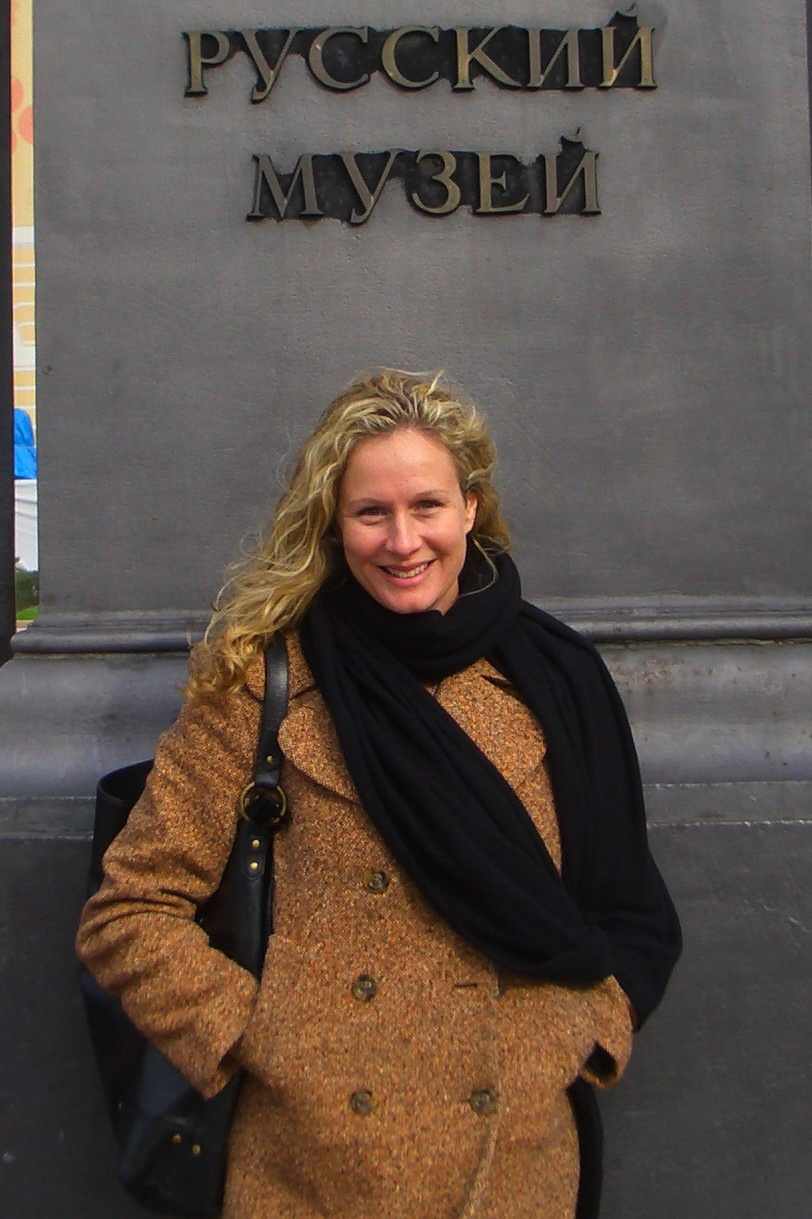
Temples of the divi imperatores: memory and identity
We know of eleven temples to individual deified emperors and their
imperial family members, or divi, in Rome: the first to Divine
Julius was dedicated in 29 BCE, and the latest, to Divine Marcus
Aurelius, was built after 181 CE. How did architecture and ritual
associated with cults of divi shape the Roman collective
memory of individual emperors and the conception of the imperial
office? What practices ensured and perpetuated imperial aeternitas?
This
study
of
the
mnemohistory
of
deified
emperors
reveals
that
the
temples
to
divi,
and
associated
ritual,
functioned
individually
and
cumulatively
as
the
primary
loci
for
the
construction of each divus
as aeternus or timeless (or even outside of time). The memory
of deified emperors became a touchstone of imperial Roman society that
provided continuity despite recurrent dynastic ruptures in the transfer
of imperial power. Moreover, this phenomenon lay at the very heart of
Roman identity formation which sought a kind of divine legitimation
through their deified rulers. I explore the tension between cultural
revision and cultural continuity inherent in collective memory and
suggest that the established dichotomy may require elaboration to
accommodate imperial deification.
Lauren Donovan Ginsberg
Brown University
Supervisor: John Bodel
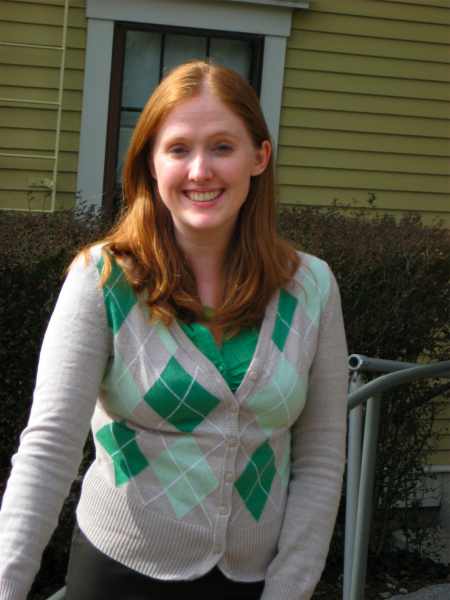
Literary and Ideological Memory in the Octavia
Scholars often note that the Octavia
as a whole presents a post-Neronian audience with a specific memory of
the dynastic purges of 62 CE and the historical figures involved in
these events. Understudied, however, is the way in which the play's own
characters constantly construct memories of the past-often in conflict
with the memories of other characters-as well as try to control how
they would in turn be remembered by posterity. My dissertation on the
large scale examines the way in which memory is constructed,
problematized, and even erased within this text. I am guided in this
research by two fundamental questions. First, I explore what role the
concept of memory plays in the Octavia and
how it becomes a significant structural and thematic motif. My second
interrelated question focuses on how the poet uses intertextual
reminiscences of Julio-Claudian literature in order to shape not only
literary memory, but also political, cultural, and ultimately
ideological memory within his historical drama. The decision to put the
Julio-Claudians back on stage was an act of staging memory that
required the poet to construct a 'realistic' or believable memory of
life under the previous regime. My dissertation aims at demonstrating
that through this intertextuality the poet of the Octavia
constructed a particular memory of Rome's first imperial family-a
memory that had lasting influence on the way in which that family would
be remembered.
Lucy Jones
University of London
Supervisors: Henrik Mouritsen,
Dominic
Rathbone

Nostra Memoria: Social Memory in Republican Rome
In this thesis, I employ the discipline of social memory to re-evaluate the decline and fall narratives of Roman society in the first century BCE within their social context. In so doing, I attempt to identify what, if any, were the ethics of social memory and how these in turn affected the historical consciousness of the Republic.
Within the discipline of Classics, the relationship between social memory and history is an area of renewed and growing interest. To the best of my knowledge, a detailed analysis of the relationship between the perceived decline and fall of Roman society and the study of social memory is exiguous, although the discipline is moving increasingly towards an understanding of the Krisenbewußtsein of Roman historical consciousness. The notion of Krisenbewußtsein in republican Rome is integral to the argument of my thesis, in that I take it to have been a response, not to 'actual' historical crises of the first century BCE, but to deep-seated social anxieties about the past and an ingrained sense of nostalgia. These concerns, although present in many societies, were reinforced in Rome by familial and societal veneration of the maiores. This framework conditioned the social memory of the past as well as the historical consciousness of the present and affected the narratives that were told both contemporaneously and subsequently about the history of Rome.
I test this theory by analysing in detail various aspects of the
written evidence from the Republic, often using interdisciplinary
approaches from, for example, anthropology and sociopsychology, to
elucidate my discussions.
Simon Lentzsch
Universität zu Köln
Supervisor: Karl-Joachim Hölkeskamp

Traumatische Erinnerungen und ihre Verarbeitung in der
römischen Kultur
Die Geschichte der römischen Republik ist zu großen Teilen eine Geschichte des militärischen Erfolgs. Ohne Zweifel stellte die Erinnerung an die zahlreichen Siege in Kriegen und Schlachten einen bedeutenden Bestandteil der römischen Erinnerungskultur dar. Diese Triumphe bildeten einen wichtigen Teil von Markierungen der eigenen Erfolgsgeschichte, welche wiederum mitunter auch als Vollzug eines göttlichen Weltplanes angesehen wurde. Jeder einzelne Erfolg war dabei auch ein Beweis dafür, dass die Götter Rom anderen Völkern vorzogen und dass das Bündnis mit ihnen, die pax deorum, intakt war. Für die Römer hatte die Vergangenheit also ein besonders hohes Gewicht. Sie wirkte fundierend und identitätsstiftend und bildete zugleich einen Auftrag an die Lebenden, an der Vollendung der eigenen Größe in der jeweiligen Gegenwart zu arbeiten. Nun waren die zahlreichen Kriege der römischen Republik allerdings nicht frei von Niederlagen. Ob in den Kriegen gegen Städte und Stämme in Italien, gegen Karthago oder gegen Gallier und Germanen: in all diesen Konflikten musste Rom teils desaströse Niederlagen erleiden, die nicht so recht in das Bild des sieghaften Roms zu passen scheinen. Was hätte also näher gelegen, als diese Niederlagen in der eigenen Erinnerung zu marginalisieren? Bereits ein erster Blick in die literarische Überlieferung zeigt aber, dass das Gegenteil der Fall ist. Dieser Befund wirft Fragen auf. Wie fügten sich diese Niederlagen in das Bild, welches sich die Römer von ihrer eigenen Vergangenheit machten ein? Konnten sich aus einzelnen Niederlagen dauerhafte Traumata herausbilden? Waren mit Niederlagen bestimmte ‚Botschaften‘ und Vorstellungen verknüpft, wenn ja welche? Gab es bestimmte Strategien der Erklärung und Verarbeitung? Schließlich dürfte vor allem die Nobilität ein Interesse daran gehabt haben, die Deutungshoheit über Niederlagen zu erlangen bzw. zu erhalten, denn immerhin leitete sie zu einem nicht geringen Anteil aus den militärischen Erfolgen Roms heraus ihren Führungsanspruch innerhalb der Gesellschaft ab. Lassen sich also Spuren davon erkennen, wie man innerhalb der politischen und militärischen Führung mit Niederlagen umging, um nicht zuletzt die Gefahr einer Untergrabung des eigenen Führungsanspruches zu unterbinden? Dieser Komplex von Fragen soll den Ausgangspunkt für die geplante Studie bilden.
Lynley McAlpine
University of Michigan
Supervisor: Elaine Gazda
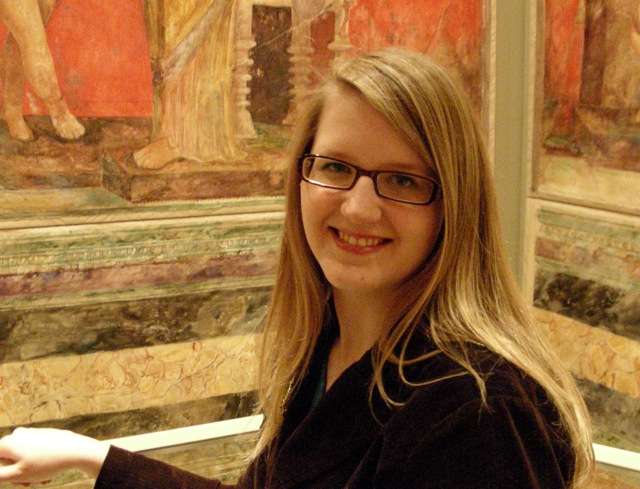
Marble, Memory, and Meaning in the Four Pompeian Styles of
Wall Painting
My dissertation focuses on the depiction of colored marble and other decorative stone in the four Pompeian styles of wall painting. Marble is especially useful for study because of its popularity in wall painting, its moral and symbolic significance in Roman literary texts, and its rate of survival in the archaeological record. Central among the approaches I employ is a consideration of the role and mechanisms of memory and reception with regard to both material culture and written documents. Due in part to its prominence in scholarship on Roman wall painting, the role of literary evidence in our interpretation of marble in wall painting should be examined from the perspective of memory studies. Adopting an approach that adds the material environment’s part in remembering to these interpretive frameworks is potentially enlightening. Not only can we use the archaeological record to check some of the claims made by ancient authors, such as Pliny the Elder, Suetonius, and Lucan, about the use of marble in the Republican and Augustan periods, we can consider the processes involved in the creation of Roman documents that describe the Roman past. Memory studies also allow us to think about how the information people remembered about paintings and about the ideals of the people who created them affected the way later generations viewed them. When focusing on marble in particular, changes in a viewer’s reception of paintings that feature imported stone might parallel changes in the meaning of those materials elsewhere, i.e. from rare commodities associated with individual military conquest and extreme wealth to, later on, decorative materials more widely accessible and symbolic of the general prosperity and influence of the Roman empire. Reception in this case would depend on whether earlier meanings were still remembered and acknowledged by later viewers, or whether viewers assumed that contemporary connotations extended into the past. Approaches that take into account memory allow us to move away from the idea of reception as something that is tied to a specific historical moment, and to think of it as a dynamic, always variable process.
Sebastian Modrow
Universität Greifswald
Supervisor: Egon Flaig

Vom punischen zum römischen Karthago. Reflexionen eines Konflikts und ihr Beitrag zur Konstruktion römischer Identität
Gegenstand meiner Doktorarbeit soll die Transformation einer realen
Landschaft, der punischen Welt mit ihrem Mittelpunkt Karthago, in einen
medialen cue des kollektiven Gedächtnisses der Römer sein.
Der gewählte Titel beinhaltet somit einerseits den zeitlichen
Rahmen der Betrachtung (von der Zeit der ersten Reflexionen (ca. 2.
Punischer Krieg) bis zur Neugründung der Stadt im Jahre 29 v.
Chr.), als auch andererseits die zentrale Frage: Wie konnte Karthago
für die Römer zu einem solchen Abrufreiz verinnerlichter
Sichtweisen werden und was beinhaltete er? Die Frage nach Entwicklung
und Inhalt des Karthagerbildes ist jedoch unweigerlich mit der Frage
nach seiner Funktion verbunden. Die Rekonstruktion von Vergangenheit
dient einem gegenwärtigen Zweck. Zudem muss der Einfluss oder die
bewusste Absetzung von bereits vorgefundenen Deutungen
berücksichtigt werden sowie die speziellen Formen römischer
Memoria. Die Begegnung der Römer mit dem punischen Kulturkreis war
zweifellos eine der folgenreichsten in der römischen Geschichte
und ihr letztendliches Resultat war die physische Vernichtung der Stadt
Karthago im Jahre 146 v. Chr. Die Errichtung des zweiten Karthago unter
Kaiser Augustus war die einer römischen Kolonie und keinesfalls
die Wiedererrichtung der alten punischen Metropole. Die
Neugründung der Stadt als Colonia Julia Concordia Carthago war
zweifellos eine ideologische Herausforderung des kulturellen
Gedächtnisses der Römer, die ihre Spuren in den historischen
Reflexionen ihrer Zeit (hier besonders in Vergils Aeneis)
hinterließ. Karthago war im kulturellen Gedächtnisses der
Römer zu einer bedeutenden Größe geworden. Seine
Wiedererrichtung war somit nicht nur ein städtebaulicher,
ökonomisch-politischer Eingriff in die Landschaft Nordafrikas,
sondern gleichzeitig einer in die römische Erinnerungslandschaft,
eine Herausforderung der römischen Identität.
Claudia Moser
Brown University
Supervisors: Susan Alcock,
John Bodel

Material Witnesses: The Memory of Sacrifice and the Altars
of Republican Rome and Latium
The
imprint
of
Republican
Roman
sacrificial
experience
on
the
minds
of
individual
practitioners
leaves
little
trace
in
surviving
texts
and
images
–
scant
remains of a few types
highly
standardized representation that cannot, in themselves, provide
a reliable reflection of the multifaceted character of ritual
performance. By contrast, sacred places are bearers of memory,
responding
tangibly over the generations to the frequency and transmission of
ritual
performance. In my dissertation, I argue that we can gain access to
this
material memory by situating sacrificial practices in their particular
temporal, geographic, architectural and topographic contexts, in spaces
centered on the actual point of ritual contact between animal and
priest, men
and gods, matter and spirit, the natural world and the divine – in
other words,
at sacrificial altars. My investigation of the material imprint of
sacrifice
focuses diachronically on five representative case studies (Lavinium,
S.
Omobono, Fosso dell’Incastro at Ardea, The Sacred Area of the
Republican
Temples at Ostia, and Largo Argentina), comparable in chronology,
regional
setting, range of sacrificial
remains and, most importantly, in
their characteristic accommodation of a multiplicity of altars within a
single
sacred area. Yet, for all that these sanctuaries have in common, each
of these
sites can be seen to leave its own distinctive, locally-bound, and, as
I hope
to show, determining imprint on the experience of sacrifice. My
research
maintains that the ordinary act of sacrifice upon an altar should be
understood
as a topographically monumental event – at once ephemeral, iterative
and
eternal – a local storing, processing and transmitting over the
centuries of
the material memory of ritual.
Shreyaa Patel
University of London
Supervisor: Richard Alston
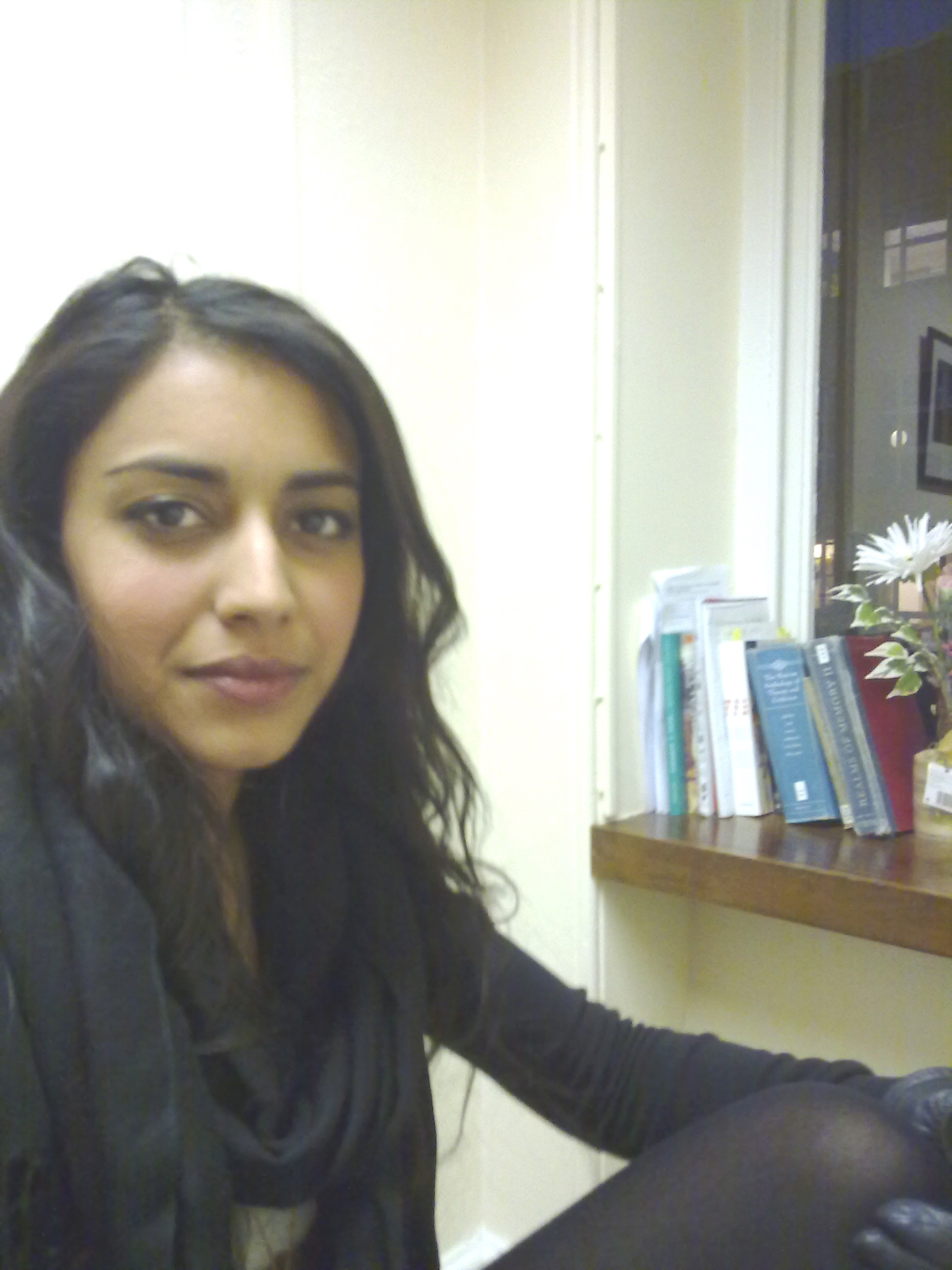
Aspects of Tacitean memory
My research will aim to question the existence of a possible 'ethics of Tacitean memory' and how such ethics could potentially better our understanding of the Tacitean oeuvre and its place within Roman history. Through reading Tacitus' writings as symptomatic of his world-view, I aim to explore whether Tacitus' historical narratives disclose a hostility towards remembering; whether he had an obligation to remember, forget (or invent) certain events or people; whether his memories of certain heroic exempla depoliticise their familiar uses and whether this can be taken as reflective of a shift in the memory of his wider Symbolic community (i.e. a possible Flavian memory?). Such a focus will enable me to examine whether the established technologies of remembering the Republican past were psychological forms of societal surveillance: was the ethic of remembering the Republican past as a repository of true virtus a form of regulating the individual? If so, a change in the memory-work shows not only the dis-acceptance of the established ethics of remembering but it furthermore becomes a counter-argument to the current political system which aimed to foster such technologies of memory. This then suggests the existence of a developing 'counter-memory' - and it perhaps illuminates established conceptions of Tacitus' references to the loss of libertas under Domitian: if the technique of remembering the past was an imposition, designed to maintain the individual within the requirements of a civilised society, can it be argued that the loss of libertas was therefore a psychological impediment on the individual subject, as well as a political hindrance? Either way, it is my view that like libertas, memory too becomes a contested ideal in the Tacitean oeuvre, yet it remains a positive site through which one can explore the remnants of a fluctuating socio-politics - a rupture in the established ethics of Roman memory.
Maggie Popkin
Institute of Fine Arts, New York University
Supervisor: Katherine Welch
Recipient of Fulbright Fellowship
(Italy), Oct. 2010-July 2011-will resume MR Fellowship, August 2011

The Triumphal Route in Republican and Imperial Rome: Architecture, Experience, and Roman Identities
The Roman triumph, an elaborate victory ritual, wound its way
through the streets of Rome from the early republican through the
imperial periods. The triumph was a quintessentially Roman institution,
embodying fundamental aspects of Rome's self-image: military might and
"world" dominance. It was intertwined with monuments, urban space,
individual and collective memory, and Roman identities, but these
levels of meaning have not yet been fully explored. I propose a
critical study of the triumph's architectural space that examines the
complex relation between Romans' memories and conceptions of the ritual
and their interactions with its associated monuments. Focusing on three
key periods in Rome's history rich in evidence - the second century
B.C.; Trajan's reign; and the Severan era - I argue that the monuments
lining the route shaped Romans' experiences and memories of triumphs as
well as their formulations of what it meant to "be Roman" in relation
to the broader Mediterranean world.
Emmanuelle Raymond
Université de Lyon
Supervisor: Hugo Bureau
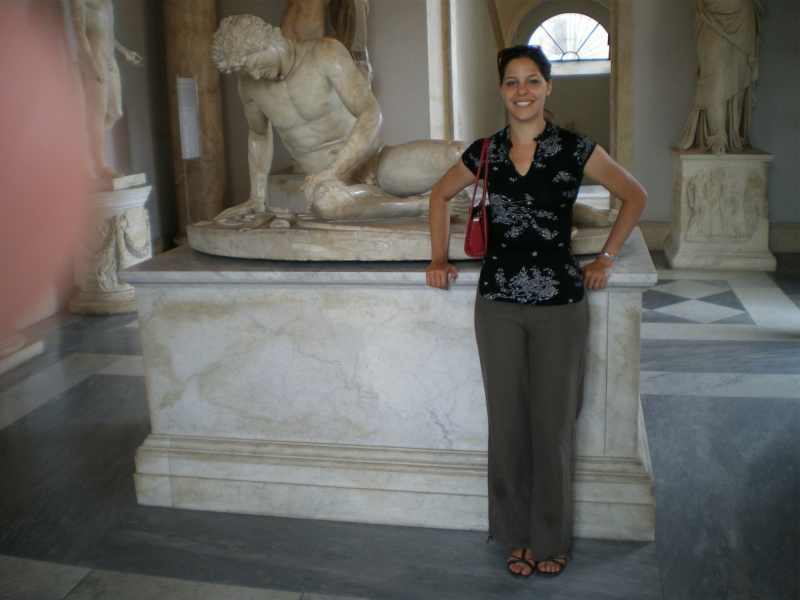
Musa, mihi causas memora... Recherche sur les formes et aspects de la mémoire dans l'Enéide de Virgile
Le projet consiste à montrer en quoi la notion de
mémoire peut s'avérer un enjeu majeur dans la composition
de l'œuvre. L'épopée virgilienne attire l'attention du
lecteur sur l'omniprésence d'une mémoire
représentée et clairement identifiable à travers
des objets, des lieux ou des personnages de la fiction. Le poète
suscite une réflexion sur cette mémoire
intradiégétique qu'il présente comme un facteur de
cohésion unissant les hommes et les époques dans un
principe de transmissibilité de la Mémoire. Virgile
propose aussi une réflexion métapoétique plus
profonde sur son art même : le poète déborde le
cadre strict de la fiction qu'il utilise pour donner libre cours
à l'expression d'une mémoire
extradiégétique où la narration laisse place au
hic et nunc de l'écrivain et de ses contemporains. Certains
passages de l'Enéide, propices à une lecture
métapoétique, suggèrent l'idée que Virgile
a disséminé dans son œuvre quelques
éléments d'un art poétique fondé sur une
utilisation de la Mémoire. Il reprend la figure traditionnelle
du uates en l'infléchissant en faveur d'une vision du
poète garant de la mémoire et définit l'Enéide
comme œuvre de mémoire dont la composition même doit
largement à cette forme littéraire du souvenir qu'est
l'intertextualité. Mais le rapport qu'entretient Virgile
à l'épopée gréco-romaine est à
l'origine d'un questionnement plus profond qui tend à montrer
l'utilisation que le poète latin fait du matériau
homérique pour le mettre au service de sa propre création
poétique, incarnant ainsi le principe littéraire de l'alter
ab
illo. Grâce à ces multiples
éléments, il est possible de mettre à jour la
construction progressive d'une définition de la mémoire
épique et plus précisément de la mémoire
épique virgilienne qui pose l'affirmation d'un genus Latinum
et se trouve au centre des choix d'écriture qui distinguent
Virgile face à ses épigones.
Stefano Rebeggiani
Università degli Studi di Roma "La Sapienza"
Supervisor: Alessandro Schiesaro

Sic itur ad astra: memoria culturale e attualità politica nella Tebaide di Stazio
Il recente sviluppo degli studi sulla memoria culturale ha fornito
un contesto teorico estremamente fecondo per l'interpretazione del
rapporto tra la memoria collettiva (nelle sue varie forme di
oggettivazione) e le forme del potere politico. Intendo studiare le
modalità con cui Stazio incorpora nel suo poema maggiore, la Tebaide,
elementi
della
memoria
collettiva
romana
(oggettivata
in
una
pluralità
di
testi,
luoghi
e
monumenti),
e
ne
fornisce
una
particolare
elaborazione
destinata
alla
costruzione
di
un
discorso
politico.
Cercherò
di dimostrare come Stazio si inserisca con
contenuti originali nel dibattito politico di età flavia, e come
il suo poema non rifletta passivamente il discorso ideologico dei suoi
tempi, ma contribuisca personalmente ad esso, presentando al principe
una riflessione sul potere ed un modello da seguire. É mia
intenzione coinvolgere in questa analisi vari ambiti della memoria
culturale: la memoria di luoghi e monumenti centrali nell'immaginario
romano, così come la memoria di eventi storici e di testi
letterari entrati a far parte, nell'epoca di Stazio, di un canone
riconosciuto come fondante in senso identitario per lo stato romano.
Aaron Seider
University of Chicago
Supervisor: Shadi Bartsch

Creating the Past: Memory in Vergil's Aeneid
My research analyzes the role that memory plays in the Aeneid
by combining recent critical work on social memory with close reading
and a narratological approach. Memory's crucial importance to Vergil's
epic is no accident. The Aeneid explores the transition
between past and future and, above all, the question of how individuals
and groups negotiate that transition. Its characters consistently
interact with their memories of Troy's destruction and think about
their own commemoration, just as the narrator, too, explores his own
relationship with memory as one who both remembers and commemorates
Rome's origins. Yet despite the signal importance of memory to the
epic, its function in the Aeneid is often misunderstood.
Contrary to interpretations that overlook memory's nuance and fluidity
in favor of the therapeutic healing that forgetting supposedly offers,
my research proposes that Aeneas and the Trojans mark and create
meaning through remembering and commemorating the past. Even though
these interactions often evoke suffering and loss, they are a key way
for Aeneas to move forward in an unknown world. A similar dynamic
exists in the narrator's relationship with his audience. He transforms
his song into a social memory for his audience to share, certain
aspects of which he acknowledges may leave him and his audience
bewildered and frustrated. By focusing upon the characters' and
narrator's engagement with memory, my research explores memory's
function in the epic as well as the Aeneid's role within the larger
cultural dialogue about memory and the past in Augustan Rome.
Kelly Shannon
University of Oxford (Corpus Christi College)
Supervisor: Rhiannon Ash
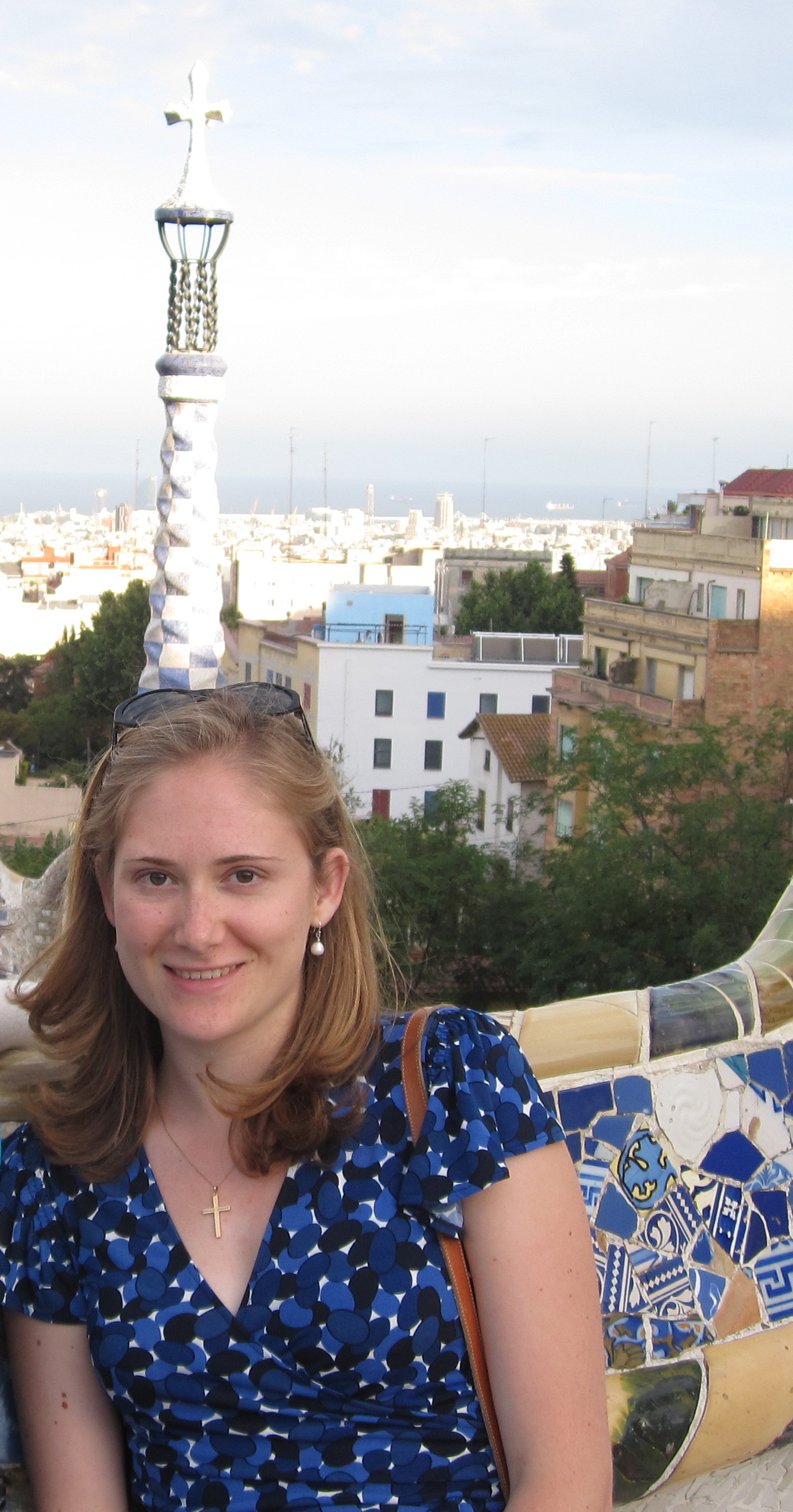
Religion in Tacitus: Historical Constructions of Memory
My thesis examines how religion in presented in the works of
Tacitus, and how it resonates with and adds complexity to the larger
themes of the historian's narratives.
Tacitus constructs a picture of a Rome with ‘religious
amnesia:’ the
Romans of the Julio-Claudian and Flavian epochs of which he writes
repeatedly
fail to maintain the traditional religious practices of their forebears. The Annals and Histories are
populated with characters, both principes
and populace, who fail to recognize or respond properly to prodigies
and omens,
commit impious acts of murder against family members, and even
participate in
the destruction of some of the city’s most sacred buildings. But
alongside this forgetfulness
of traditional religious practice runs the construction of a new memory
– that of divus Augustus – leading to the
veneration of emperors in terms appropriate to gods during their own
lifetimes. This creates a religious
narrative that resonates with and illuminates Tacitean observations on
the
nature of power in imperial Rome.
The types of religious material Tacitus incorporates include
calendars
(how do Tacitus’ Romans preserve or change the traditional scheduling
of
religious festivals?), architecture (what determines the building of or
alterations to temples and other religious monuments?), liturgy (do
they
celebrate festivals in the same ways as their ancestors?), and images
(how do
they treat cult statues?). I
investigate these religious categories and their function in Tacitus’
writings,
and how his characters interact with them: what are the patterns of
behaviour,
both in terms of ritual practice and in how they think about and
interpret the
supernatural, and how does Rome’s religious past feature in these
patterns? I
will consider the differences in Tacitus’ treatment of religious
material
across his works, and across the principates of different emperors
within the Annals. I will
also consider Tacitus’ vision of the
way history works to
preserve religious memory. This is done through intertextuality
with his
historiographical predecessors, where reminiscences of previous
examples of
religious correctness from Rome's earlier history lurk in the
background of an
impious imperial Rome that fails to read and imitate them. This touches on
the notion of Tacitean exemplarity: to what extent does our historian
expect
that his own work will similarly serve as a paradigm for his
contemporaries?
Markus Stachon
Ruhr-Universität Bochum
Supervisor: Reinhold Glei
Dichtermemoria zwischen kommunikativem und kulturellem
Gedächtnis:
Untersuchungen zu vergilischen, ovidischen und senecanischen
Pseudepigraphen
Zu Lebzeiten bekannte Dichter sind sich häufig ihres
Nachruhms bewusst. So nennt etwa Ovid seine Werke den besseren Teil von
sich,
der ewig weiterleben wird (met. 15, 871–879).
Doch was passiert, wenn das Werk des Dichters nach seinem
Tod durch Pseudepigraphen erweitert und dadurch verändert wird?
Primäre
Pseudepigraphen – also Schriften, die dem angegebenen Dichter bewusst
untergeschoben sind – datieren meist in die Zeit wenige Generationen
nach
dessen Tod. Die Erinnerung an ihn ist in dieser Zeit noch von
Zeitgenossen
geprägt (kommunikatives Gedächtnis); das Bild von ihm, das
die Zeiten überdauern wird (kulturelles Gedächtnis), bildet
sich noch
heraus.
Sein monumentum aere perennius errichtet sich ein
Dichter nämlich nicht allein, sondern zusammen mit ihm die
Rezipienten seiner
Werke. Erst nach etwa hundert Jahren verfestigt sich das
Gedächtnisbild des
Dichters, das zum tradierten Lexikonwissen wird: Wie stark wird dieses
Bild
durch Pseudepigraphen beeinflusst?
Es sollen folgende Werke untersucht werden:
Ps.-Vergil: Catalepton, Culex, Dirae;
Ps.-Ovid: Nux, Consolatio ad Liviam, Halieutica, Ibis,
Somnium (am. 3, 5), Heroides 15–21;
Ps.-Seneca:
Epigrammata,
Octavia.